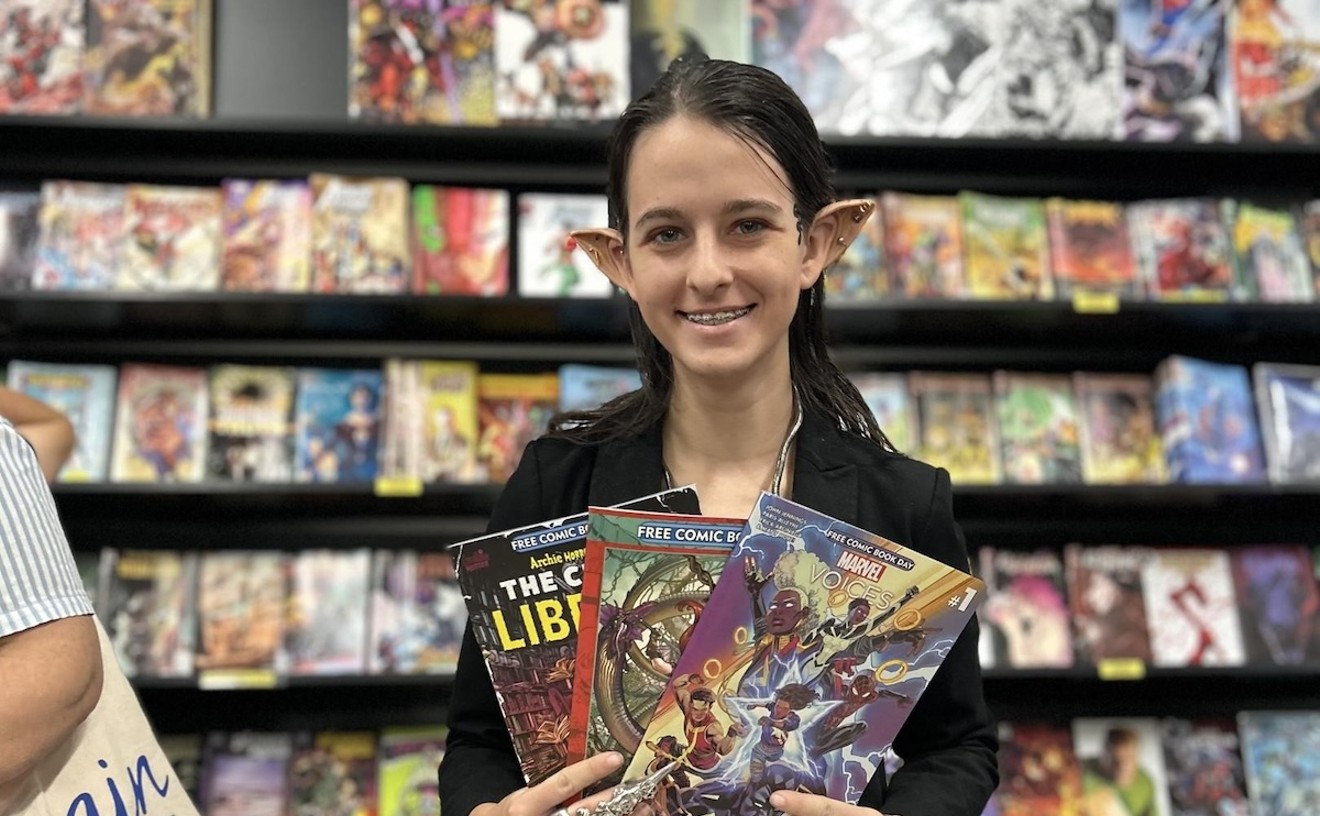Inside the Miami Art Museum, Rashid Johnson stands in front of a garage-door-size tiled mirror divided at the center by a cascading swath of black soap and wax. Clad in a brown sweater over a black T-shirt and black jeans, the 35-year-old has the svelte figure of an athlete and the disarming charm and handsome looks of a stage actor.
Like so many of the common household objects he uses in his art, mirrors attracted Johnson both for their more transcendent suggestions (of "now-ness" and the present) and for their everyday resonance — particularly of that morning moment when we compose ourselves for the day.
"If you look in the mirror now, you don't look like the same person who left home three hours ago," he says.
Some sections of the mirrored work, titled Body Blow, though, are also covered in tarry, obsidian-like blemishes that bring to mind blood stains, while other panes are splintered in small concentric circles reminiscent ovf bullet holes. That scarred surface suggests notions of fractured identity and distorted reality.
Those are two of the overarching themes of "Rashid Johnson: Message to Our Folks," the New York-based artist's first major solo museum exhibit showcasing nearly a decade and a half of work, with an emphasis on his major pieces from the past five years. The exhibition's title is appropriately taken from the Art Ensemble of Chicago's 1969 avant-garde album in which musicians used found objects to make percussion and redefine jazz.
This sprawling, thought-provoking and challenging show boasts nearly 40 works that encompass photography, sculpture, painting, and video and reflect Johnson's explorations of questions dealing with the self, identity, art history, metaphysics, and other topics.
Johnson, who was born and raised in Chicago, creates works using unexpected, everyday materials such as books, shelves, mirrors, shea butter, black soap and wax, red oak flooring, CB radios, record albums, and Persian rugs. The items are common, but conceptually freighted and autobiographical.
As he tours the exhibit at MAM, Johnson stops in front of one of his shelf pieces, called Triple Consciousness. The octagonal wall sculpture boasts three identical album covers of Al Green's classic Greatest Hits, an LP including the tracks "Here I Am," "Tired of Being Alone," and "Full of Fire" — up-tempo songs that echo Johnson's recent art-world ascendancy. During the past year, after all, Johnson has been included in the International Art Pavilion of the 54th Venice Biennale, was nominated for the Guggenheim Museum's 2012 Hugo Boss Prize, and won the High Museum's David C. Driskell Prize, honoring African-American art and scholarship.
Yet the album also reflects racial issues that continue to follow black artists, including Johnson. On the cover, Green appears shirtless with his hands outstretched toward the viewer as if snapping his fingers. One art dealer asked the artist if Green was "flashing gang signs." Johnson told him that he wouldn't work with him again.
"I grew up at the time of the third wave of Afro-centrism," Johnson says. "My parents had Afros, wore dashikis, and celebrated Kwanzaa. When I was about 13 or 14, they stopped participating in that. I was raised in this space and later abandoned in this space and no longer part of that."
His work evokes domestic spaces reconfigured into altar-like structures. Covered in thick coats of black soap and wax, the surfaces suggest sacrifice or a nod to ancestors or those who paved the way for deeper knowledge.
Johnson's mother, Cheryl Johnson-Odim, and father, Jimmy Johnson, divorced when the artist was 2. He later spent his youth between both of their homes in Chicago.
His mother was a Northwestern University professor specializing in African and African-American history, and his father operated an electronics business selling parts for CB radios. Their influences echo throughout the exhibit.
Also present are references to African-American cultural titans such as W.E.B. Du Bois, Frederick Douglass, jazz composer Sun Ra, heavyweight boxer Jack Johnson, Miles Davis, and even Public Enemy.
"Growing up, I was listening to some hip-hop and asked someone who it was, and they told me Public Enemy," he recalls, laughing. "But I thought they said, 'Public Interview.' I remember thinking at the time that 'Public Interview' was fucking great."
The group inspired one of the artist's most striking sculptures, a minimalist piece crafted from blackened gunmetal steel that looks like a massive howitzer aimed at the spectator. Black Steel in the Hour of Chaos borrows its name from a 1988 song by Public Enemy, whose logo features an image of a rifle's cross hairs to symbolize the gun violence against black youth during the group's heyday.
Johnson also appropriates that cross-hair symbol as a recurring motif in branded red oak flooring that covers the entire entrance of a gallery. The piece, created specifically for this show, knocks art off the institutional altar to offer a work on which visitors can literally walk. It also contains images of palm trees and a griffin, the symbol of Sigma Pi Phi, the first African-American Greek-lettered fraternity.
"I built a forge and created my own brands to mark the floors," Johnson says.
The untitled work conjures thoughts of both the unofficial branding rituals employed by some black fraternities, which use this act as a sign of collective unity, and more sinister references to how plantation owners marked slaves as their property.
As for the palm trees emblazoned on his floor, Johnson says he embraces them as a symbol of how far he has traveled from his Midwestern roots to his first museum show in Miami.
"I think of them as an opportunity that's available to remind I've done something and gone somewhere away from home," he says.
Johnson's conceptually muscular and brainy romp at MAM convinces that not only is he a talent to watch, but also his work speaks to the universal in a way that burrows deep beneath the skin.










